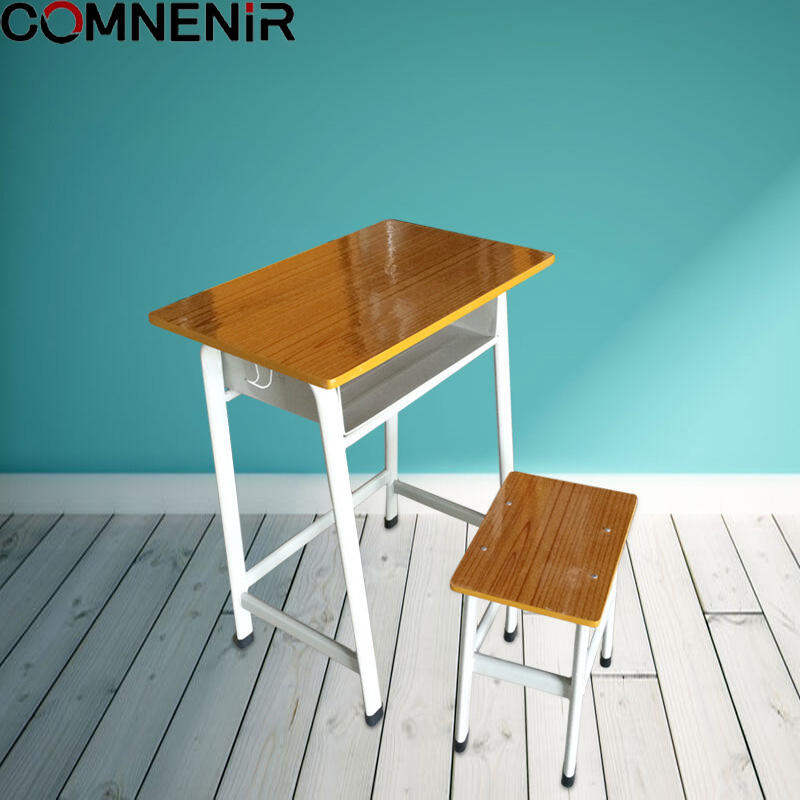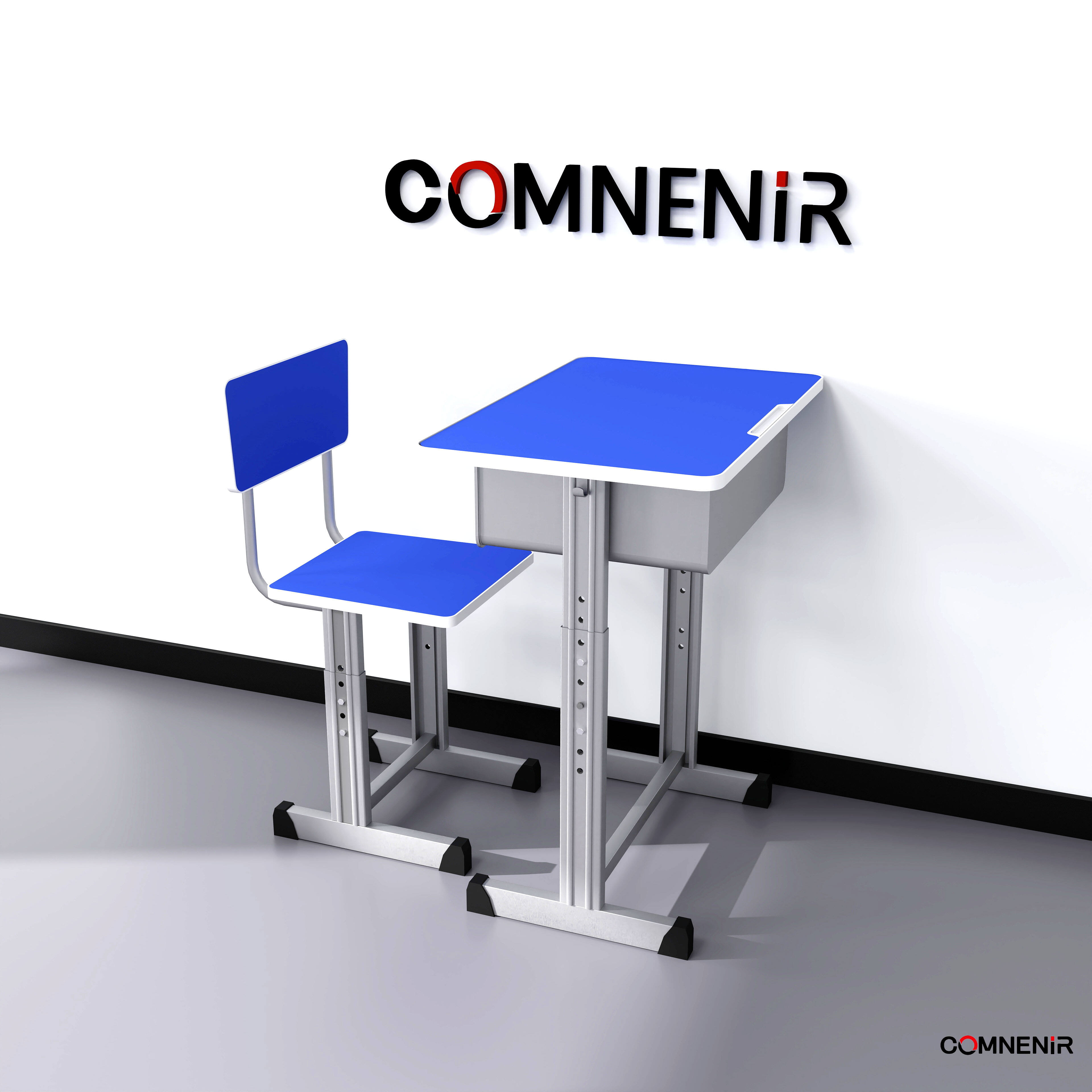Beneficios a Largo Plazo de los Asientos Ergonómicos
Prevención de Problemas de Desarrollo Musculoesquelético
Una buena ergonomía es importante para prevenir trastornos musculoesqueléticos, especialmente durante los años de desarrollo de un niño. Al seguir la forma natural del cuerpo, ayudan a proporcionar una postura correcta y aliviar la tensión muscular y la fatiga. Investigaciones recientes han demostrado que al usar regularmente una silla ergonómica se pueden reducir en un 30% los niveles de molestias asociados con problemas musculoesqueléticos. Esto no solo asegurará que se alcance un estado óptimo de salud física, sino que también sentará las bases perfectas para la salud de la columna vertebral de su hijo mientras crece. Fomentar una buena postura desde temprana edad puede ayudar al desarrollo de la salud física de un niño y establecerá una base para la salud y el bienestar durante toda su vida.
Reducción de la fatiga crónica durante lecciones prolongadas
El diseño de los asientos en las aulas suele ser incorrecto, lo que provoca puntos de presión que causan fatiga en los estudiantes. Las sillas ergonómicas han sido diseñadas con la intención expresa de abordar este problema, promoviendo una buena postura y aliviando el estrés en áreas sensibles. Los estudios sugieren que los estudiantes se sienten hasta un 20% más concentrados y energizados mientras estudian durante períodos prolongados en mobiliario ergonómico. Y para mantener a los estudiantes interesados y capaces de retener esa información, necesitarás un entorno estimulante. El mobiliario ergonómico proporciona un entorno de aprendizaje más productivo, lo que lleva a una dinámica de aula que apoya la concentración por períodos más largos y promueve mejores niveles de energía, todo lo cual afecta positivamente el rendimiento académico de un estudiante.
Impactos Cognitivos y Académicos de la Optimización de la Postura
Mejora de la Concentración a través de la Eliminación del Incomodo
La reducción de los niveles de incomodidad de los estudiantes sentados puede traducirse en un aumento del rendimiento cognitivo y una mejora en el desempeño académico y el aprendizaje. Y estudios han mostrado un aumento del 15% en la capacidad de atención en entornos educativos cuando también se está cómodo al sentarse, confirmando nuevamente que el confort físico puede ayudar a mejorar el rendimiento mental. Una buena postura ayuda a asegurar un flujo adecuado de oxígeno al cerebro, lo cual es un componente clave para completar trabajos académicos. Ponemos a los estudiantes en una posición cómoda: creamos un lugar propicio para el aprendizaje donde el estudiante puede concentrarse más efectivamente en el trabajo sin ruido físico.
Participación Mejorada a través del Apoyo a la Movilidad
La mayoría de las sillas de aula vienen en diseños ergonómicos que apoyan la flexibilidad y los dirigen a participar activamente durante las conferencias. Este soporte de movilidad permite a los estudiantes sentirse más cómodos para expresarse en clase y ha aumentado la asistencia en un 25 % en algunas escuelas. Fomentar la movilidad no solo incrementa la oportunidad para que los estudiantes trabajen juntos con más frecuencia, sino que también eleva el espíritu del aula en general, ya que el entorno se centra más en el proceso de aprendizaje como una comunidad. Con asientos ergonómicos adecuados, los alumnos pueden cambiar de posición fácilmente y ayudar a crear un entorno de aprendizaje emocionante y activo mientras reducen la fatiga por estar sentados durante períodos prolongados.
Elegir las Sillas Ergonómicas Correctas para el Aula
Requisitos de Ajustabilidad Apropiados para la Edad
Ajustabilidad Apropiada para la Edad Sillas Ergonómicas para el Aula Es importante tener en cuenta la ajustabilidad apropiada para la edad al elegir sillas ergonómicas para el aula. Las sillas deben estar diseñadas para aceptar una variedad de tamaños corporales y edades, lo que permite que se adapten a estudiantes de diversas demografías. Según estudios, las sillas que se pueden ajustar con una altura del asiento y una posición del respaldo son adecuadas para brindar soporte a más del 85% de los estudiantes de primaria y secundaria. La capacidad de hacerlo también fomenta que los estudiantes se sienten correctamente para que no les duela la espalda y puedan tener un mejor proceso de aprendizaje. El acceso a sillas ergonomicamente adecuadas durante el proceso de selección puede ayudar a elegir sillas que reflejen la diversidad física en un aula y mejoren el confort y la concentración de los estudiantes.
Consideraciones de durabilidad para aulas dinámicos
La durabilidad es una consideración importante para sillas de aula ecológicas. Las sillas que pueden soportar los rigores del uso activo y acomodar fácilmente el cambio en la forma de usar las aulas son inversiones importantes que mejoran el valor que ofrece una propiedad educativa. Las sillas hechas de materiales de buena calidad duran 10 años o más, incluso con uso regular, y son menos costosas a largo plazo para reemplazar. Y elige materiales sostenibles para hacer tu parte hacia los movimientos verdes, ya que la responsabilidad ambiental se está volviendo cada vez más importante en nuestra selección de mobiliario escolar. Las sillas pesadas no solo proporcionan asientos seguros y cómodos, sino que también ofrecen un buen asiento en el entorno de aprendizaje, ya que están diseñadas para su uso en el aula.
Estrategias de Implementación para Aulas Conscientes de la Postura
Capacitación Docente sobre Ajustes de Sillas Ergonómicas
Para que los estudiantes experimenten las ventajas ergonómicas de estas sillas, es necesario que los profesores reciban formación sobre los diversos ajustes de las sillas. Al educar a los educadores sobre cómo utilizar las características ergonómicas, el aula puede ser personalizado para adaptarse a una variedad de estudiantes. Los problemas y soluciones relacionados con la postura mediante el ajuste adecuado de las sillas pueden ser muy efectivos cuando se presentan en forma de talleres. No solo son un factor en la comprensión, sino que también permiten a los profesores resolver los problemas posturales. Además, las sesiones de formación aseguran que los profesores estén al día con los avances más recientes y las mejores prácticas en ergonomía, asegurando que el entorno del aula sea el mejor posible.

Programas de Concienciación sobre la Postura Estudiantil
Incluir programas sobre la educación de la conciencia postural puede tener un impacto significativo en la salud de los estudiantes y en el rendimiento académico a largo plazo. Incluir estos programas en el currículo de la escuela puede ayudar a enseñar a los estudiantes la importancia de practicar una buena postura a través de actividades entretenidas e interactivas que pueden atraerlos a ser más conscientes sobre cómo se sientan. Informes de escuelas que ya han adoptado este tipo de esfuerzos de conciencia postural indican que los estudiantes se sienten significativamente más involucrados y cómodos en sus clases. A medida que los estudiantes asumen la responsabilidad de sentarse derechos, no solo pueden sentirse mejor físicamente, sino que también pueden aumentar su capacidad para concentrarse y mejorar el entorno de aprendizaje en general.
Cumplimiento de los estándares de accesibilidad e inclusividad
Requisitos de la ADA para estudiantes con necesidades especiales
Cuando se trata de asientos para estudiantes con necesidades especiales, las escuelas deben estar familiarizadas con la Ley de Estadounidenses con Discapacidades (ADA). La ADA proporciona a las instituciones recomendaciones para entornos accesibles y legalmente conformes. El incumplimiento de la política puede tener consecuencias legales profundas y diluir la calidad del entorno de aprendizaje. Se requiere que se proporcionen sillas ergonómicas en el diseño. Existe evidencia de que mejorar y hacer instalaciones más seguras resulta en un aumento del 40% en los estudiantes que se sienten confiados y dispuestos a participar en actividades escolares, estos resultados son los mejores para aquellos con necesidades especiales. Por lo tanto, al adoptar las pautas de la ADA, las escuelas pueden atender mejor una variedad de necesidades y proporcionar un entorno académico y social mejorado para todos los estudiantes.
Principios de Diseño Universal para Tipos Corporales Diversos
El diseño universal aplicado en el aula garantiza la adaptación para todos los estudiantes, independientemente del tipo de cuerpo, y fomenta un entorno inclusivo para el aprendizaje. Los aspectos adaptables y personalizables del mobiliario escolar son una parte integral del diseño universal, ya que acomodan una amplia gama de capacidades físicas entre los estudiantes. Estudios muestran que este principio conduce a una mayor participación activa en el aula, donde todos los alumnos se sienten valorados e incluidos. El diseño universal crea una mentalidad inclusiva que permite a los estudiantes participar cómodamente en su entorno de aprendizaje, sin importar su tamaño, forma o habilidades. No solo mejora el confort físico, sino que también crea una cultura de equidad y dignidad en las escuelas.
Sección de Preguntas Frecuentes
¿Cuáles son los beneficios clave del asiento ergonómico?
El asiento ergonómico ofrece numerosos beneficios para la salud, incluida la reducción de trastornos musculoesqueléticos, la disminución de la fatiga, el aumento de la concentración y la mejora de la participación entre los estudiantes.
¿Cómo pueden las escuelas elegir las sillas ergonómicas adecuadas?
Las escuelas deben centrarse en la ajustabilidad apropiada para la edad, la durabilidad y la inclusión de características ergonómicas que atiendan a las diversas necesidades de los estudiantes. Consultar con expertos en ergonomía puede facilitar mejores elecciones para el mobiliario del aula.
¿Por qué es importante la formación docente para el asiento ergonómico?
La formación ayuda a los profesores a comprender cómo ajustar las sillas ergonómicas para satisfacer las necesidades de los estudiantes, mejorando así su postura y creando un entorno de aprendizaje más favorable.
¿Cómo benefician a los estudiantes los programas de concienciación sobre la postura?
Estos programas aumentan la participación y el confort de los estudiantes, fomentan buenos hábitos posturales y tienen un impacto positivo en su rendimiento académico.
Cuadro de contenido
- Beneficios a Largo Plazo de los Asientos Ergonómicos
- Impactos Cognitivos y Académicos de la Optimización de la Postura
- Elegir las Sillas Ergonómicas Correctas para el Aula
- Estrategias de Implementación para Aulas Conscientes de la Postura
- Cumplimiento de los estándares de accesibilidad e inclusividad
- Sección de Preguntas Frecuentes

